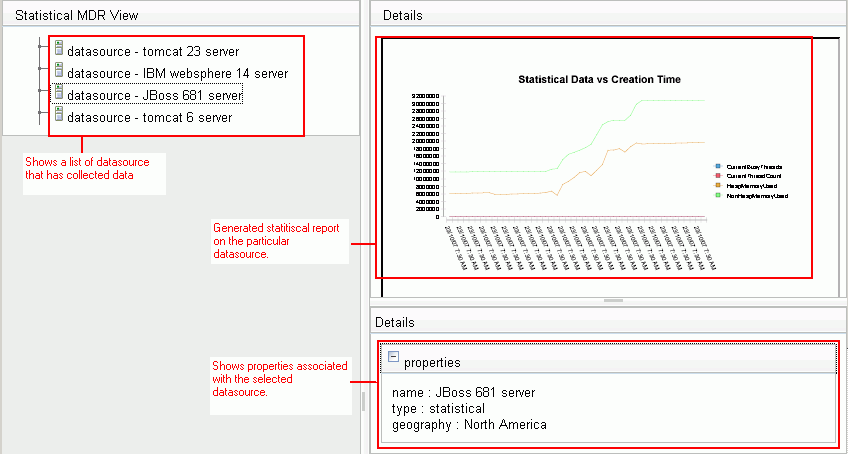Notice: this Wiki will be going read only early in 2024 and edits will no longer be possible. Please see: https://gitlab.eclipse.org/eclipsefdn/helpdesk/-/wikis/Wiki-shutdown-plan for the plan.
Difference between revisions of "COSMOS Design 200275"
| Line 57: | Line 57: | ||
'* - includes other committer work (e.g. check-in, contribution tracking) | '* - includes other committer work (e.g. check-in, contribution tracking) | ||
| − | + | = ''' Terminologies/Acronyms''' == | |
The terminologies/acronyms below are commonly used throughout this document. The list below defines each term regarding how it is used in this document: | The terminologies/acronyms below are commonly used throughout this document. The list below defines each term regarding how it is used in this document: | ||
| Line 74: | Line 74: | ||
=Purpose= | =Purpose= | ||
This enhancement involves refactoring the existing reports to use the new Data Collection Query APIs. The existing examplar report templates utilize the old query assembly components. In addition, a datafeed is required to get a list of datasource that a statistical or monitoring data manager is aware of. | This enhancement involves refactoring the existing reports to use the new Data Collection Query APIs. The existing examplar report templates utilize the old query assembly components. In addition, a datafeed is required to get a list of datasource that a statistical or monitoring data manager is aware of. | ||
| + | |||
| + | =Requirements= | ||
=Implementation details= | =Implementation details= | ||
| Line 114: | Line 116: | ||
} | } | ||
</pre> | </pre> | ||
| + | |||
| + | = ''' Test Coverage ''' == | ||
| + | |||
| + | = ''' Open Issues ''' == | ||
Revision as of 11:03, 4 December 2007
Contents
Refactor Report Component to use Data Collection Convenient query asembly APIs
Change History
| Name: | Date: | Revised Sections: |
|---|---|---|
| Sheldon Lee-Loy | 11/14/2007 |
|
| John Todd | 12/04/2007 |
|
Workload Estimation
| Process | Sizing | Names of people doing the work |
|---|---|---|
| Design | 0.5 | Sheldon Lee-Loy |
| Code | TBD | |
| Test | 0.2 | |
| Documentation | 0.2 | |
| Build and infrastructure | 0.2 | |
| Code review, etc.* | 0.2 | |
| TOTAL | TBD |
'* - includes other committer work (e.g. check-in, contribution tracking)
Terminologies/Acronyms =
The terminologies/acronyms below are commonly used throughout this document. The list below defines each term regarding how it is used in this document:
| Term | Definition |
|---|---|
| Term | Definition |
Purpose
This enhancement involves refactoring the existing reports to use the new Data Collection Query APIs. The existing examplar report templates utilize the old query assembly components. In addition, a datafeed is required to get a list of datasource that a statistical or monitoring data manager is aware of.
Requirements
Implementation details
There is currently two types of report templates.
- Statistical Report
- Monitoring Report
The refactoring involves changing the binding logic defined in the datasets and modification to the report parameter.
Statistical Report Template Refactor Design
The following new report parameters should be defined for the statistical report:
- epr - epr address to the statistical data manager.
- datasource id - an identifier that represents a datasource known by the data manager
The binding logic defined in the datasets will take the above report parameters to bind to the statistical data manager. Once binded the dataset will use the "convenient apis" provided by the statistical data manager. These APIs are defined by the data collection component. The corresponding data collection enhancement will define the APIs [reference bugzilla # is required here].
Monitoring Report Template Refactor Design
The monitoring report template will undergo similar refactoring. The following new report parameters should be defined for the monitoring report:
- epr - epr address to the statistical data manager.
- datasource id - an identifier that represents a datasource known by the data manager
The binding logic defined in the datasets will take the above report parameters to bind to the monitoring data manager. Once binded the dataset will use the "convenient apis" provided by the statistical data manager. These APIs are defined by the data collection component. The corresponding data collection enhancement will define the APIs [reference bugzilla # is required here].
Data Feed
When visualizing a statistical or monitoring data manger the COSMOS UI will allow the user to expand the monitoring/statistical data manger node in the Navigator. The expansion of this node will send a query to either the monitoring or statistical data manager to get the list of data sources known by the data manager. For example, consider an MDR that contains statistical data for several tomcat servers and operating systems. This view will list all the set of tomcat servers and operating servers as data sources contain statistical data. The user has the option to right-click on a particular data source to generate a report based on a set of available statistical reports.
Mockup
Sample Data Feed
The following is the output that the data feed will produce a list of datsources from a monitoring data manager:
{ identifier: "object", label: "title",
items:[
{title:"Windows XP Application Log ",datasource:"server 1",classification:"CBE",nodeClass:"datasource",object:"2"}
,{title:"Appache HTTP Access Log ver 5.5",datasource:"server 1", classification:"CBE",nodeClass:"datasource",object:"3"}
]
}

